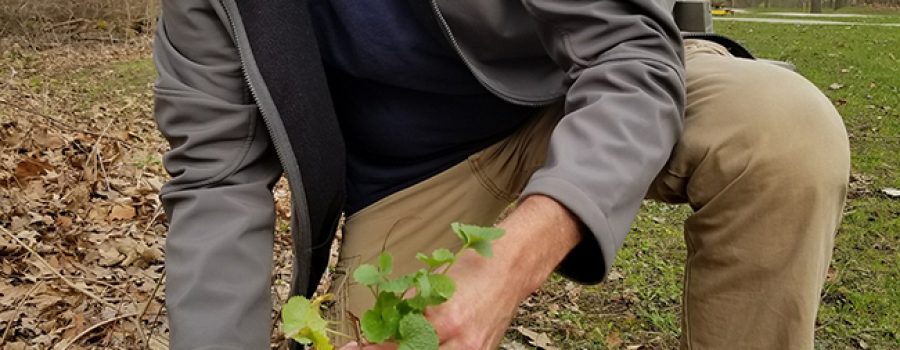Garlic Mustard Alliaria petiolata is a non-native plant that is harming our forest environment. The roots release a toxic chemical called sinigin that acts to damage the roots of surrounding plants, shrubs and trees and also kill the fungal mat underlying the soil. The fungi are interconnected with the shrub and tree roots and if this mat is removed, forest trees can’t get the moisture they need to survive dry summers.
You can help! Garlic Mustard (GM) takes 2 years to grow and produce seed. In spring you can find the 1st year’s growth, called a basal rosette. This rosette is green even under the snow so shows up early in spring, before other native spring plants emerge from the soil. By digging out this rosette, you can stop the plant flowering and making seed, which is the way it spreads.
Steps –
- Grasp the rosette from the bottom, gently lift and use a gardening trowel to dig down and around the rosette, leaving about an inch to 2 inches gap between the trowel and the outer leaves. This ensures all root stalks are removed.
- Gently shake the rosette to remove loose soil. As GM seed grows quickly in disturbed soil it is advised to tamp (push and flatten) the loose soil remaining and re-cover with dead leaves.
- Now you get to enjoy a nice salad! GM leaves, seeds and flowers are edible and can be eaten raw or used in cooking to add a garlic-mustard taste to your supper.

